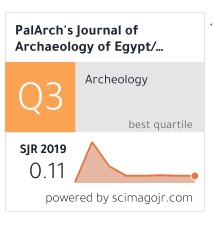DETERMINANTS OF LIVELIHOOD DIVERSIFICATION AMONG RABHA TRIBES OF ASSAM: A CASE STUDY
Abstract
North Eastern India is home of more than 200 dominant tribes and many sub tribes reflecting a
complex social structure. Tribal community of Assam are concentrated mostly on rural areas and
agriculture is their main sources of income. But, tribal’s income from agriculture has become
barely at more or less subsistence level, depending solely on agriculture for their survival is not
sufficient. In order to overcome from uncertainty and risk these people tends to adopt multiple
sources of income and thus diversify their livelihoods in order to survive. This study carried out
to investigate the pattern and process of livelihood diversification by using Simpson
diversification index. This study also tries to investigate the determinants of livelihood
diversification among Rabha tribes in Assam with the help of tobit regression model. Rabha is
one of the most important plains tribe inhabited in Assam. This study is based on primary data
collected from two Rabha villages of Kamrup (rural) District of Assam. Multistage sampling
technique has been used to select the sample size. Result indicates that household size, family
type, education and land holding plays a significant role in determining livelihood
diversification.



